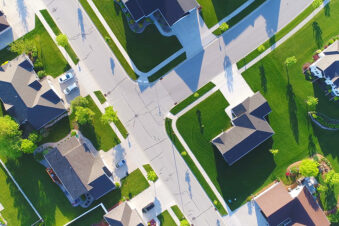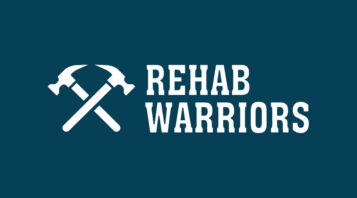Obtaining financing needed to purchase or rehabilitate a home can be a source of frustration for individuals with non-traditional income sources, poor credit scores, or a high debt-to-income ratio, seeing as many of the traditional financing pathways are closed to high-risk borrowers.
Over the years, the Federal Housing Administration (FHA) has introduced several types of FHA loans to improve accessibility to home financing. Specifically, many borrowers will choose between a 203(b) vs 203(k) FHA loan.
But how do these two financing options stack up? Read on as we discuss FHA 203(b) vs 203(k).
What Is an FHA 203(b) Loan?
Before we start differentiating 203(b) vs 203(k), let’s first define what the FHA 203(b) is. The FHA 203(b) loan is a government-insured mortgage, underwritten and managed by third-party lenders, that can be used for purchasing or refinancing a primary residence. This type of financing is designed for first-time home buyers, borrowers who may not qualify for affordable conventional mortgages, and people living in underserved areas.
These insured mortgages can be used to finance the purchase of a new or already built one- to four-unit structure or be used to refinance an FHA or non-FHA mortgage.
An FHA 203(b) loan requires terms like:1
- Low down payment requirements – Conventional mortgage products will typically require a downpayment of 5%+, whereas FHA 203(b) mortgages may only ask for down payments as low as 3.5%.
- Income requirements – Although there are no explicit income limits to participate in a 203(b) loan, lenders will perform a financial analysis to determine whether the borrower will be able to cover payments for at least the first three years of the loan.
- DTI requirements – Lenders will review your debt-to-income ratio to see what other financial payments you need to service. To qualify, borrowers must have a DTI of 43% or less.
- Financing – Lenders may finance up to 96.5% of the home’s value, depending on their credit score. Borrowers are not eligible for 203(b) financing if their credit score is sub-500. If their score is between 500–579, the borrower will be limited to a maximum LTV of 90%. If their credit score is 580+, they are eligible for maximum financing of 96.5% LTV.
- Property criteria – The home needs to meet minimum durability, safety, and soundness property standards. Sellers of the residence must address any safety or soundness issues as a condition of accepting the loan. If they refuse, the buyer may be able to create an escrow account for repairs and financing via a 203(k) limited loan.
Is a 203(b) a Renovation Mortgage?
A 203(b) loan is designed solely for the purchase or refinancing of a 1- to 4-unit primary residence. It does not cover any changes made to the dwelling. For that, a borrower would need to apply for a 203(k) rehab loan.
What Is the FHA 203(k) Loan?
The FHA 203(k) loan is designed to help both home buyers and homeowners purchase and then improve their homes, like a fixer-upper that’s in need of repairs or modifications. This type of FHA-backed loan bundles both the purchase of the property and the financing of renovations into a single mortgage. How does a 203(k) loan work? According to the Housing of Urban Development:2
“When buying a house that needs repair or modernization, homebuyers usually have to follow a complicated and costly process. The interim acquisition and improvement loans often have relatively high-interest rates, short repayment terms, and a balloon payment. However, Section 203(k) offers a solution that helps both borrowers and lenders, insuring a single, long-term, fixed or adjustable rate loan that covers both the acquisition and rehabilitation of a property.”
Put simply, a Section 203(k) insured loan can save borrowers time and money. Keep this in mind when comparing a conventional renovation loan vs 203(k) loan.
There are two types of 203(k) loans:
Standard 203(k) Loan
The standard 203(k) loan was created for the virtual reconstruction of the home—even for homes meant to be demolished—to cover significant structural work and rehabilitation.
Under the standard program, borrowers can finance up to the area’s FHA limit plus the cost of renovations. Borrowers must spend at least $5,000 on renovations. They may also be required to enlist the services of a HUD consultant.
Eligible repairs under a standard FHA 203(k) loan include:
- Accessibility upgrades
- Appliance and HVAC upgrades
- Electrical, plumbing, heating, and cooling improvements
- Energy conservation improvements
- Landscaping improvements
- Modernizations
- Pest remediation
- Roofing alterations
- Safety improvements
- Sewage and septic improvements
- Site conversion and improvements
- Site relocation
- Storm shelter additions
- Structural alterations to foundations or load-bearing walls
Limited 203(k) Loan
Limited 203(k)s offer financing for new and existing homes that can be remodeled or repaired for under $35,000; hence, the “limited” descriptor. Because of its narrow application, it tends to be easier for borrowers to qualify for a limited 203(k) than a standard. Additionally, there are no minimum repair costs or HUD consultant requirements.
A limited 203(k) is ideal for minor remodeling and non-structural repairs, such as:
- Accessibility upgrades
- Abatement of lead-based paint
- Indoor or outdoor painting
- Pest remediation
- Replacing appliances
- Repairing or replacing:
- Decks
- Downspouts
- Electrical systems
- Flooring
- Gutters
- Heating
- HVAC
- Patios
- Plumbing
- Porches
- Roofing
- Waterproofing or finishing a basement
- Weatherization
The Key Differences Between 203(b) Loan vs 203(k)
How do the 203(b) and 203(k) loan types compare with one another? Let’s break down the details between 203(b) vs 203(k) loans by category:
| 203(b) Loan | 203(k) Loan | |
| Purpose of Financing | Purchase or refinance of a primary residence | Purchase or refinance of a primary residence, with additional funds for renovation or repair |
| Eligible properties | Single-family to four-family homes, condominiums, and townhouses | Single-family to four-family homes, condominiums, and townhouses |
| Maximum Loan Amount | Typically limited to FHA loan limits for the area | The total amount of the purchase price and renovation costs, up to FHA loan limits for the area |
| Minimum down payment | 3.5% of the purchase price (depending on credit score) | 3.5% of the total cost of the purchase and renovation (depending on credit score) |
| Funding for renovations/repairs | N/A | Included in the loan amount |
| Eligible renovations/repairs | N/A | Renovations or repairs that are deemed necessary by the appraiser and approved by the lender |
| Loan process | Standard FHA loan application and underwriting process | Requires additional paperwork and a construction plan, and may involve a HUD consultant and inspection process |
| Timeline | Typically shorter than a 203(k) loan, since there are no renovation funds involved | Typically longer than a 203(b) loan, due to the additional paperwork, consulting, and renovation planning |
| Interest rate | Generally lower than a 203(k) loan | Generally higher than a 203(b) loan, because of additional risk and financing involved |
| Requirements for contractors | N/A | Must be licensed and insured, and must meet certain FHA standards |
| Appraisal process | Follows the standard FHA appraisal process to determine the fair market value of the property | Requires an FHA-approved appraiser to assess the value of the property both before and after the proposed renovations/repairs |
Advantages and Disadvantages of a 203(b) Loan
- Pros
- Low downpayment compared to conventional loans
- Flexible credit requirements
- Lower interest rates
- Wide range of eligible properties
- Cons
- Maximum loan is limited to FHA loan limit
- FHA loans have mortgage insurance premium (MIPs)
- Some property condition and type requirements
- Upfront and ongoing costs like appraisal and inspection fees
Advantages and Disadvantages of a 203(b) Loan
- Pros
- Financing for renovations and repairs
- Higher loan amounts (includes purchase price and renovation costs)
- More flexible credit requirements
- Potential to increase the value of the property via renovation
- Cons
- Longer loan process than a 203(b)
- Higher interest rates than a 203(b)
- Need to hire a licensed and insured FHA contractor
- Appraisal process includes pre- and post- renovation assessments
When Should You Choose an FHA 203(b) vs FHA 203(k)?
When it comes time to make a loan choice, how do you know whether an FHA 203(b) vs FHA 203(k) loan is right for you?
If you need assistance purchasing a property that is already in good condition—such that it doesn’t require major renovations or repairs—a 203(b) loan is an ideal option, especially for first-time homebuyers who want a low downpayment.
If you need assistance purchasing a fixer-upper, or if you want to refinance your current home and wish to also include the repairs into the mortgage, a 203(k) would likely be the better choice.
That said, the decision depends on your financial situation and the property’s condition.
A Residential Sale-Leaseback—The Alternative Financing Solution
For decades, FHA loans have been viewed as a reasonable alternative financing solution for homeowners and homebuyers that may not qualify for a conventional mortgage or conventional loan. Depending on your financial situation, an FHA 203(b) or 203(k) could be viable methods for obtaining the funds necessary to purchase and/or improve a home.
But, if you already own equity in your home, there may be a better option available, such as the residential sale-leaseback. With this modern financing solution, you can sell your home and then lease back the property from the buyer with the option to repurchase the home at a later point.
A leaseback is ideal for homeowners—particularly those individuals that are too young to qualify for a reverse mortgage—that want to convert the money they’ve invested in their home into cash but don’t want to move out.
So, before you apply for an FHA 203(k) or 203(b), or even a conventional loan for that matter, consider whether the benefits of a sale-leaseback would be a superior alternative for your fiscal status and long-term goals.
Sources:
FDIC. 203(b) Mortgage Insurance Program. https://www.fdic.gov/resources/bankers/affordable-mortgage-lending-center/guide/part-1-docs/203b-mortgage-insurance-program.pdf
HUD. 203(K) Rehab Mortgage Insurance. https://www.hud.gov/program_offices/housing/sfh/203k/203k–df



















